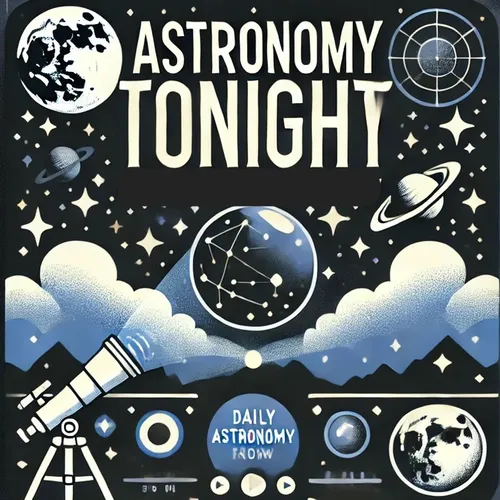Astronomy Tonight for - 12-02-2024
- Author
- Inception Point Ai
- Published
- Mon 02 Dec 2024
- Episode Link
- https://www.spreaker.com/episode/astronomy-tonight-for-12-02-2024--63103770
Ah, December 2nd! A date that twinkles with astronomical significance! Let's journey back to December 2, 1974, for a truly out-of-this-world event.
On this day, the Pioneer 11 spacecraft became the first human-made object to encounter the planet Jupiter. This intrepid space explorer, launched by NASA in 1973, blazed a trail through the cosmos and gave us our first up-close look at the gas giant.
Picture this: A small, spinning spacecraft, no bigger than a car, hurtling through space at over 107,000 mph. As it approached Jupiter, Pioneer 11 must have felt like a tiny moth drawn to a colossal, swirling flame. The spacecraft came within 26,600 miles of Jupiter's cloud tops – close enough to feel the breath of the giant planet, if spacecraft could breathe!
The data and images Pioneer 11 sent back were nothing short of revolutionary. It captured detailed photos of Jupiter's Great Red Spot, that enormous storm that's been raging for centuries. Imagine the excitement in mission control as those first images came through – scientists probably spilled their coffee in their haste to analyze the data!
Pioneer 11 also discovered Jupiter's polar regions and mapped its intense magnetic field. It was like giving Jupiter its first full body scan, revealing secrets that had been hidden from Earth-bound eyes for millennia.
But the adventure didn't stop there. After its Jupiter flyby, Pioneer 11 used the planet's gravitational pull like a cosmic slingshot, propelling itself towards Saturn. Talk about an interplanetary frequent flyer!
This groundbreaking mission paved the way for future exploration of the outer solar system. Without Pioneer 11's brave first steps (or should I say, first spins?), we might not have had the spectacular Voyager missions or the Cassini probe's dance with Saturn's rings.
So, next time you look up at Jupiter in the night sky, give a little wink to Pioneer 11. On December 2, 1974, it was out there, doing the cosmic equivalent of ringing Jupiter's doorbell and running away – but not before snapping some amazing pictures for the family album of our solar system!
This content was created in partnership and with the help of Artificial Intelligence AI
